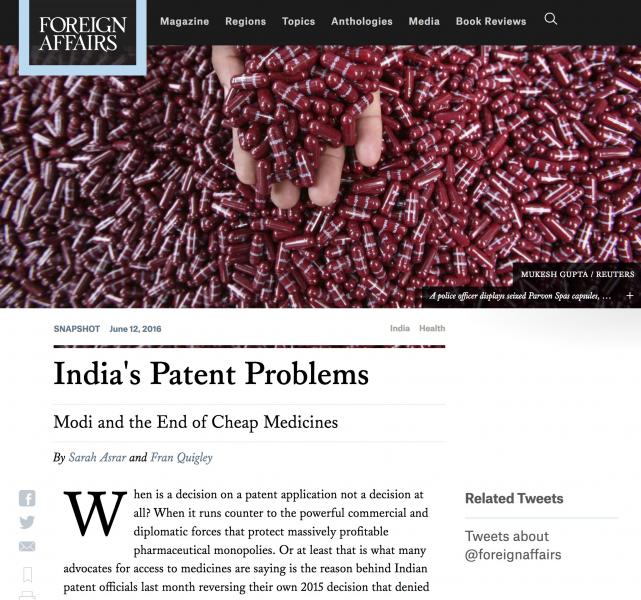
When is a decision on a patent application not a decision at all? When it runs counter to the powerful commercial and diplomatic forces that protect massively profitable pharmaceutical monopolies. Or at least that is what many advocates for access to medicines are saying is the reason behind Indian patent officials last month reversing their own 2015 decision that denied United States-based Gilead Sciences a patent on its hepatitis C treatment sofosbuvir, commonly marketed as Sovaldi. The new decision holds that Sovaldi meets the Indian patenting requirements of novelty and inventiveness. But the earlier decision by the same agency came to the opposite conclusion, holding that Gilead’s drug was not a significant improvement over an already available compound.
To advocates, only one thing changed in the interim: intense lobbying of Indian authorities by the United States and the pharmaceutical industry. “This was due to political pressure,” intellectual property attorney Tahir Amin, Director of Initiative for Medicines, Access, & Knowledge (I-MAK), told STAT's Pharmalot, a pharmaceutical blog. The timing of the two decisions seems to support that view. The original Sovaldi ruling was handed down in the weeks leading up to a January 2015 visit by U.S. President Barack Obama to India. Obama’s administration has sharply criticized India’s practices of favoring generic medicines, and the first ruling was thought to have put a damper on that visit. The new pro-patent reversal was announced less than a month before Indian Prime Minister Narendra Modi’s arrival in New York on June 6.
There are at least 80 million people worldwide who are infected with the hepatitis C virus, which can lead to liver cirrhosis, liver failure, and cancer if left untreated. The disease’s spread is so vast that the World Health Organization has labeled it a “viral time bomb.” The good news is that Sovaldi represents a new and remarkably effective treatment, known as a direct-acting antiviral, which provides a complete cure in more than 90 percent of the infected patients...
